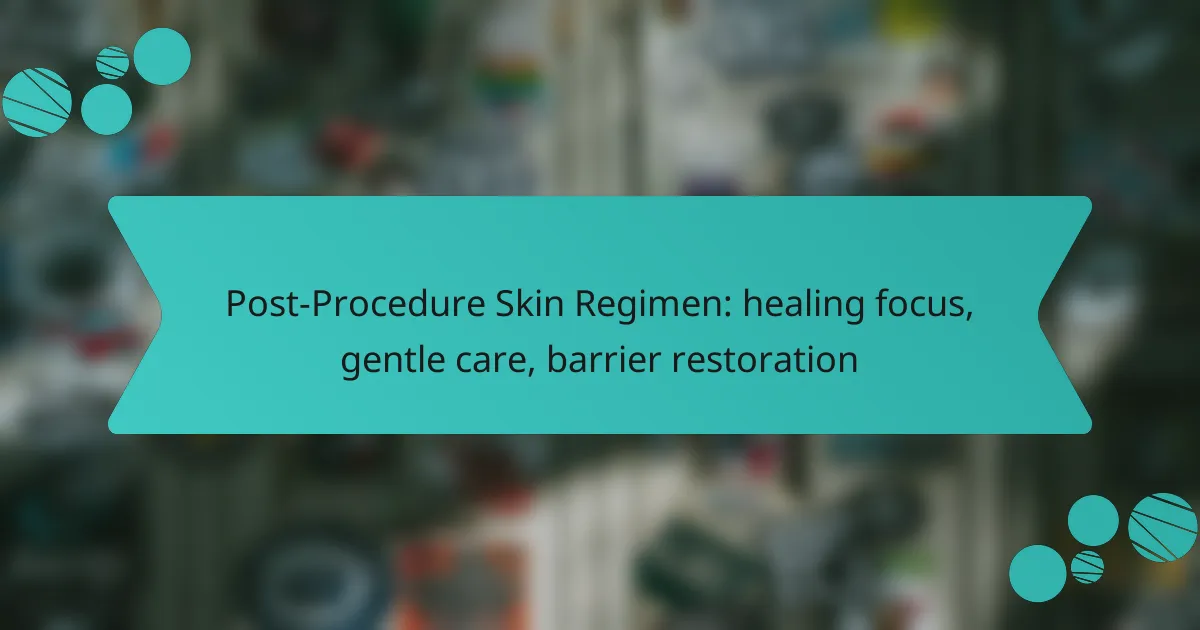A post-procedure skin regimen is essential for supporting healing and recovery after cosmetic or dermatological treatments. This specialized routine emphasizes gentle care, hydration, and barrier restoration to minimize irritation and promote optimal results. By choosing the right products designed for post-procedure care, you can effectively nurture your skin and enhance its recovery process.

What is a post-procedure skin regimen?
A post-procedure skin regimen is a specialized routine designed to support skin healing and recovery after cosmetic or dermatological treatments. It focuses on gentle care, promoting healing, and restoring the skin barrier to ensure optimal results and minimize complications.
Definition of post-procedure skin care
Post-procedure skin care refers to the practices and products used to care for the skin following treatments such as chemical peels, laser therapy, or microdermabrasion. This regimen typically includes cleansing, moisturizing, and protecting the skin to facilitate recovery and enhance results.
Common elements in a post-procedure regimen may include hydrating serums, gentle cleansers, and sun protection. Each component plays a crucial role in maintaining skin health during the healing process.
Importance of healing focus
A healing focus in post-procedure skin care is essential for reducing inflammation and promoting tissue repair. Products that contain soothing ingredients, such as aloe vera or chamomile, can help calm the skin and accelerate recovery.
It’s important to avoid harsh treatments or products that can irritate the skin during this time. Instead, prioritize hydration and nourishment to support the skin’s natural healing processes.
Role of gentle care
Gentle care is vital in a post-procedure regimen to prevent additional irritation or damage. This includes using mild cleansers that do not strip the skin of its natural oils and avoiding exfoliants until the skin has fully healed.
Incorporating fragrance-free and hypoallergenic products can further reduce the risk of adverse reactions. Always patch-test new products before applying them to the entire face.
Significance of barrier restoration
Restoring the skin barrier is a key aspect of post-procedure care, as treatments can compromise this protective layer. A healthy barrier helps retain moisture and protects against environmental stressors.
To support barrier restoration, use emollients and occlusives that lock in hydration. Ingredients like ceramides and fatty acids are particularly effective in rebuilding the skin’s natural defenses.
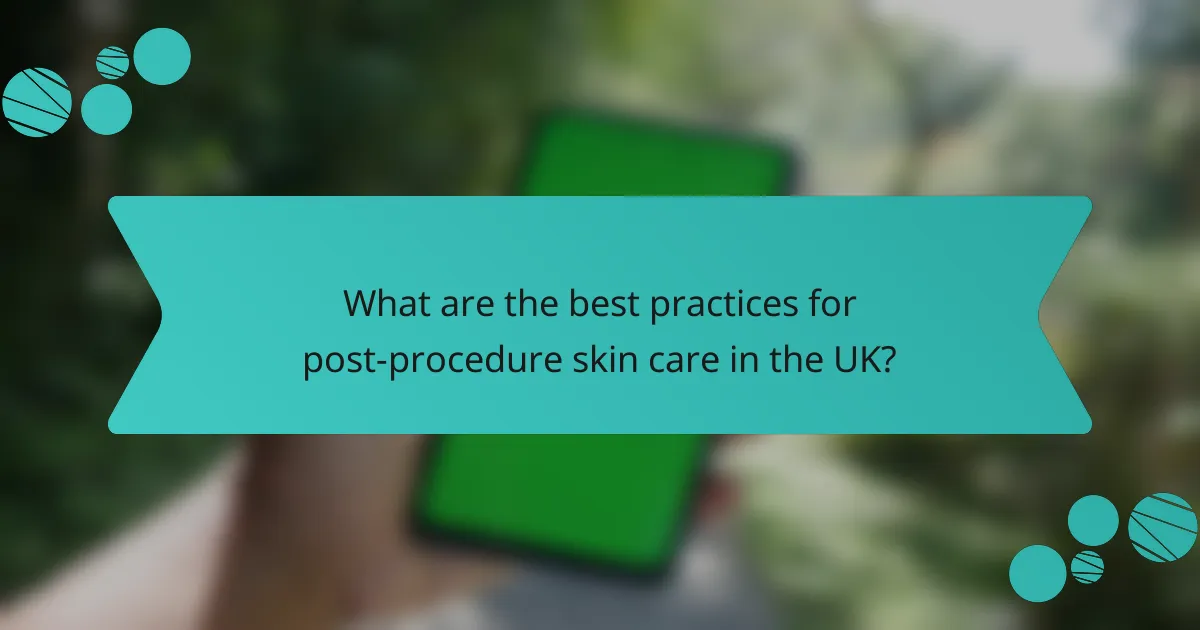
What are the best practices for post-procedure skin care in the UK?
Post-procedure skin care in the UK focuses on gentle care, hydration, and barrier restoration to promote healing. Following these best practices can help minimize irritation and support skin recovery.
Hydration techniques
Hydration is crucial for healing skin after a procedure. Use a gentle, fragrance-free moisturizer to maintain moisture levels and prevent dryness. Consider applying a hydrating serum containing hyaluronic acid, which can attract and retain water in the skin.
Incorporating a humidifier in your environment can also help maintain moisture in the air, benefiting your skin’s hydration levels. Aim to drink plenty of water daily to support overall skin health from within.
Recommended products for sensitive skin
Choose products specifically formulated for sensitive skin to avoid irritation. Look for those labeled as hypoallergenic and free from common irritants like fragrances and alcohol. Ingredients such as ceramides and glycerin can help restore the skin barrier.
Brands like La Roche-Posay and CeraVe offer a range of products that are well-suited for post-procedure care. Always perform a patch test before trying new products to ensure compatibility with your skin.
Frequency of application
Apply moisturizers and hydrating serums at least twice a day, or more frequently if your skin feels dry or tight. After cleansing, it’s beneficial to apply products while the skin is still slightly damp to lock in moisture.
For specific treatments, follow your dermatologist’s recommendations on application frequency. Generally, consistency is key to achieving the best results in skin recovery.
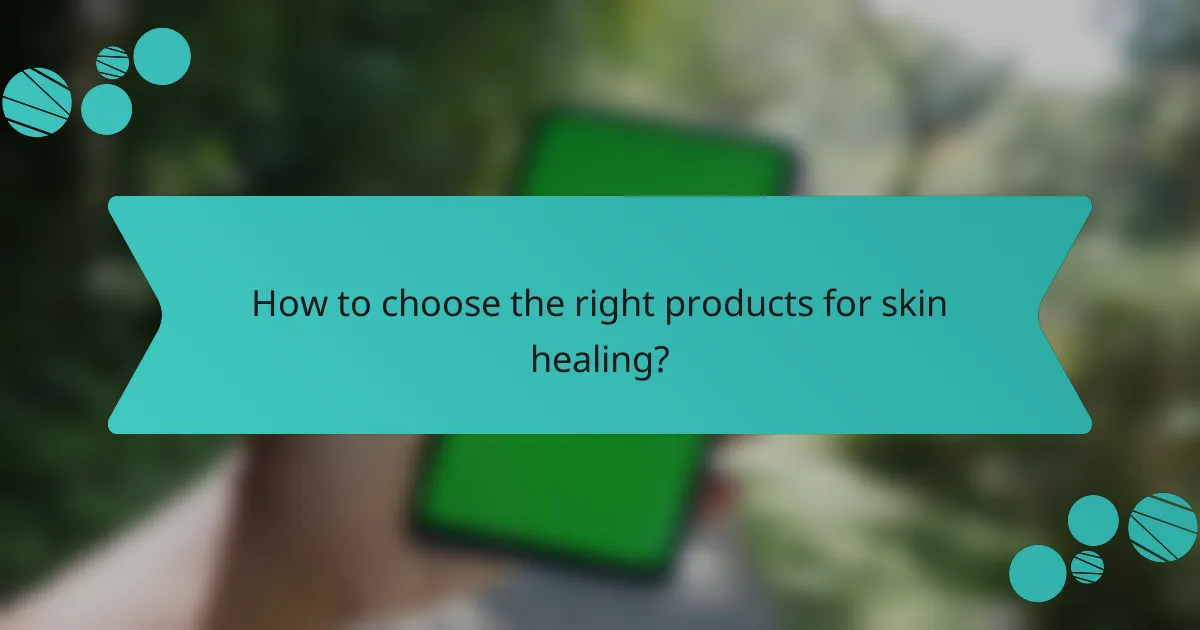
How to choose the right products for skin healing?
Selecting the right products for skin healing involves prioritizing gentle formulations that support recovery and restore the skin barrier. Look for items that are specifically designed for post-procedure care, as they often contain beneficial ingredients and are free from irritants.
Key ingredients to look for
When choosing products for skin healing, focus on ingredients known for their soothing and restorative properties. Look for hyaluronic acid, which hydrates and plumps the skin, and ceramides, which help to restore the skin barrier. Additionally, consider products with niacinamide, as it can reduce inflammation and improve skin texture.
Other beneficial ingredients include aloe vera for its calming effects and peptides that promote skin repair. Avoid products with fragrances, alcohol, or harsh exfoliants, as these can irritate sensitive skin.
Brands specializing in post-procedure care
Several brands are recognized for their commitment to post-procedure skin care. Look for options from brands like La Roche-Posay, which offers a range of soothing products, and CeraVe, known for its barrier-repairing formulations. Another good choice is SkinCeuticals, which provides high-quality serums and moisturizers aimed at recovery.
Additionally, consider products from EltaMD, particularly their sunscreen options, which are gentle and effective for healing skin. Always check for dermatologist recommendations to ensure the products are suitable for your specific needs.
Patch testing recommendations
Before fully incorporating a new product into your routine, conduct a patch test to avoid adverse reactions. Apply a small amount of the product to an inconspicuous area, such as the inside of your wrist or behind your ear, and observe for any irritation over 24 to 48 hours.
If you experience redness, itching, or swelling, discontinue use immediately. This step is crucial, especially for sensitive skin post-procedure, to ensure that the products you choose support healing rather than hinder it.
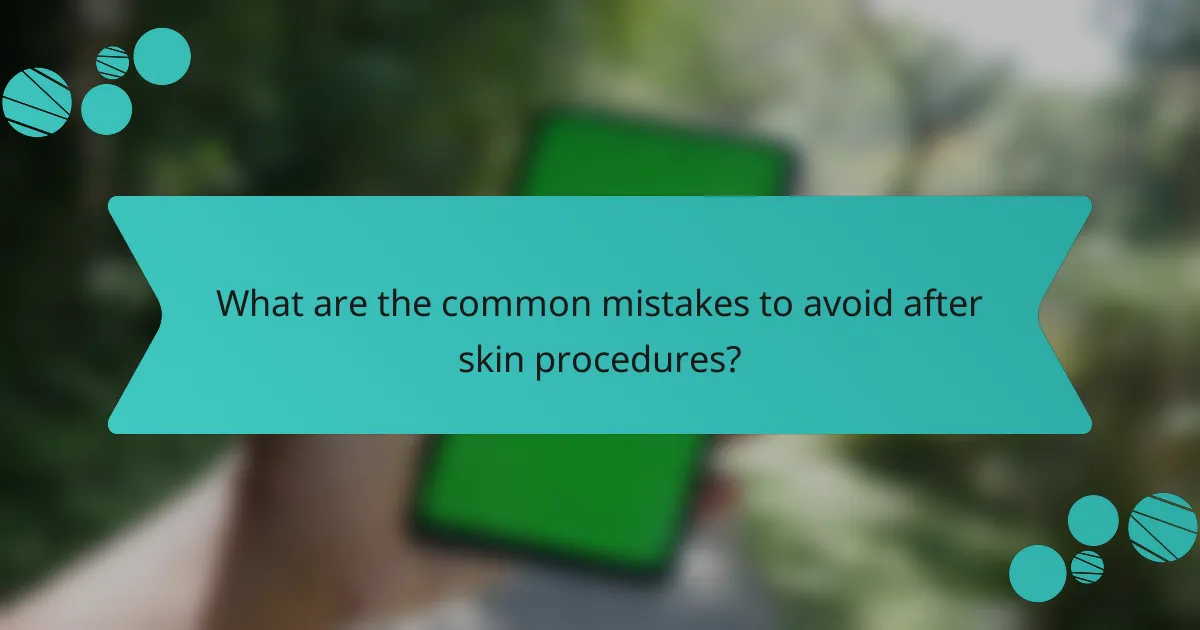
What are the common mistakes to avoid after skin procedures?
After skin procedures, avoiding certain mistakes is crucial for optimal healing and skin health. Common pitfalls include over-exfoliating, neglecting sun protection, and using harsh products that can disrupt the skin barrier.
Over-exfoliation risks
Over-exfoliation can significantly hinder the healing process. It may lead to irritation, redness, and even prolonged recovery times. After a skin procedure, the skin is sensitive and requires gentle care.
To prevent over-exfoliation, limit the use of exfoliating products to once or twice a week, and opt for mild formulations. Always listen to your skin; if it feels sore or looks red, reduce the frequency or intensity of exfoliation.
Ignoring sun protection
Failing to protect your skin from the sun can result in complications and prolonged healing. UV exposure can cause hyperpigmentation and damage newly treated skin, making sun protection essential.
Use a broad-spectrum sunscreen with an SPF of at least 30 daily, even on cloudy days. Reapply every two hours, especially if you are outdoors. Wearing protective clothing and seeking shade can further enhance your skin’s safety.
Using harsh products
Harsh products can irritate sensitive skin post-procedure, leading to inflammation and setbacks in healing. Ingredients like alcohol, strong fragrances, and certain acids can be particularly damaging.
Instead, choose gentle, hydrating products that are fragrance-free and formulated for sensitive skin. Look for soothing ingredients like aloe vera or chamomile, and always patch test new products before full application.
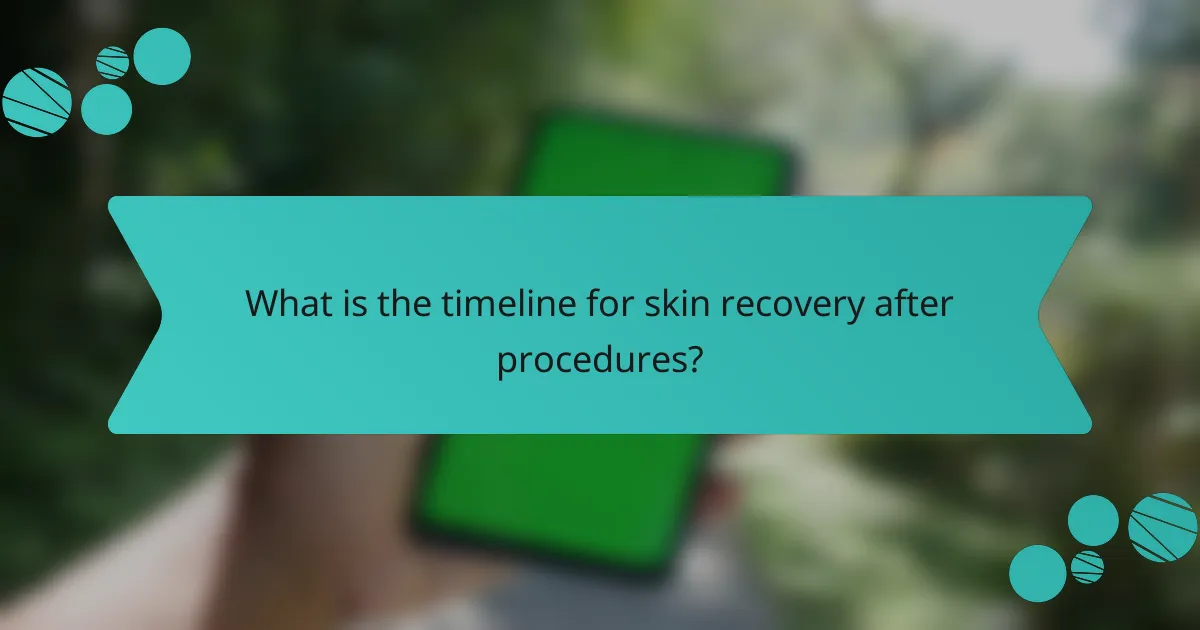
What is the timeline for skin recovery after procedures?
The timeline for skin recovery after procedures varies depending on the type of treatment, but generally, initial healing occurs within a few days to a week, while complete recovery may take several weeks to months. Understanding this timeline helps in planning appropriate post-procedure care and setting realistic expectations for healing.
Typical healing phases
Skin recovery typically progresses through several phases: inflammation, proliferation, and remodeling. The inflammation phase usually lasts a few days, during which redness, swelling, and tenderness may occur. Following this, the proliferation phase can last from a week to several weeks, where new tissue forms and the skin begins to heal.
The final remodeling phase can take weeks to months, as the skin strengthens and any discoloration fades. During this time, it’s crucial to maintain a gentle skincare routine to support the healing process.
Signs of proper healing
Proper healing can be identified by several signs, including reduced redness, decreased swelling, and the formation of new skin. As the skin heals, you may notice a gradual improvement in texture and tone, indicating that the recovery is on track.
Additionally, the absence of pain or discomfort is a positive sign. If you experience increased redness, swelling, or any unusual symptoms, it’s advisable to consult a healthcare professional to ensure there are no complications.
